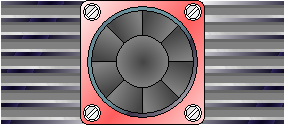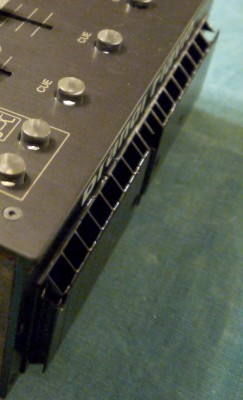
Knowing the thermal resistance in free air of an heatsink and the air velocity which flows the heatsink surface itself is possible to calculate the thermal resistance and the maximum dissipate power with forced air circulation.
°C
°C
m/s
Help for the definition of the air flow.
Distance between the baffles
mm
Fin height
mm
Quantity of slits
n.
Some examples of air flows
| Fan type | W x H (mm) | m3/h |
| Axial | 40 x 40 | 9.7 |
| 60 x 60 | 21 | |
| 80 x 80 | 50 | |
| 92 x 92 | 80 | |
| 119 x 119 | 130 | |
| 127 x 127 | 250 | |
| 172 x 172 | 305 | |
| Centrifugal | 15 x 51 | 9.6 |
| 33 x 93 | 56 | |
| 127 x 117 | 80 | |
| 115 x 159 | 200 | |
| 253 x 83 | 115 | |
| 329 x 83 | 173 | |
| 395 x 83 | 200 |
Air flow
m3/h
Thermal resistance in free air of the heat sink
°C/W, K/W
This value can be obtained from the catalog of the producer or calculated with the available application in this section of the website.
| Results | |||
| Thermal resistance of the heat sink (forced ventilation) |
°C/W | ||
| Maximum power dissipable | W | ||
Notes.
Important: give the thermal resistance of the heatsink in free air considering the only
surfaces touched by the air circulation.
 In the picture on the left you can see an example of a special heatsink normally functioning
with natural air circulation, by necessity, a fan pressurize the internal of the case and
a series of slit canalizing the air into the external baffle.
In the picture on the left you can see an example of a special heatsink normally functioning
with natural air circulation, by necessity, a fan pressurize the internal of the case and
a series of slit canalizing the air into the external baffle.
This solution allows the cooling of the inner components and the fins of power limiting
accretion of dust and noisiness, the external fin is able to assolve its function without
the fan for the 90% of the hours of functioning.
Only in summer or with sun exposition come into action the forced ventilation for keep
the temperature into the project limits.
Applications for thermal dissipation.